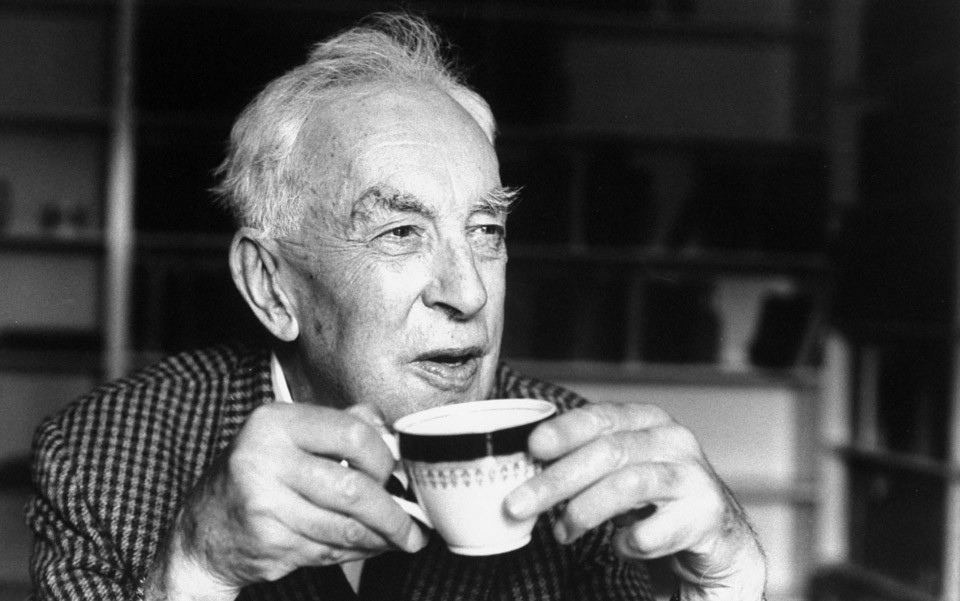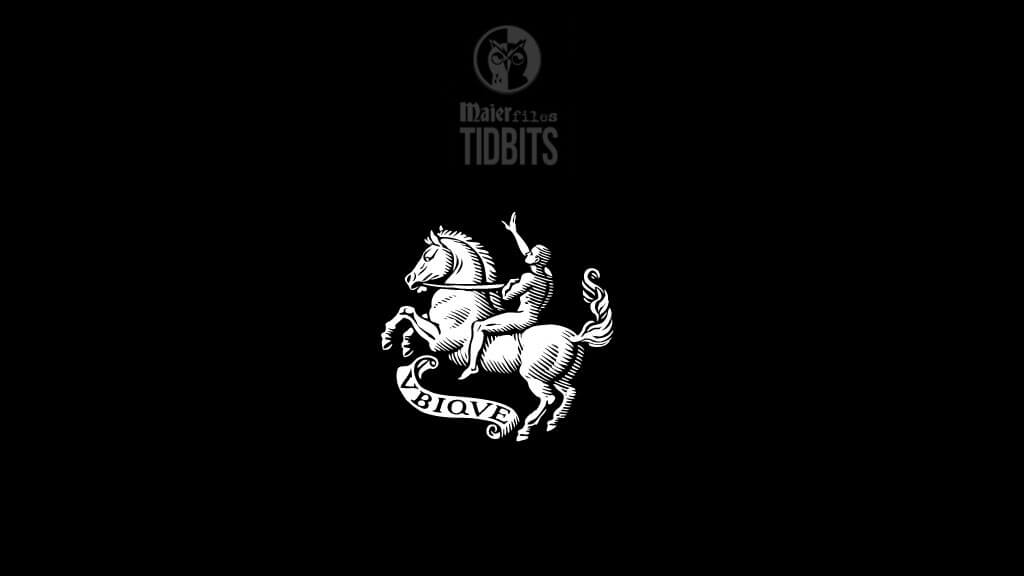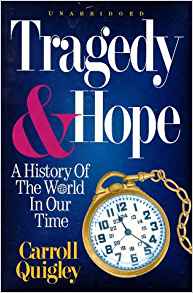In the shadows of history, obscured by the veils of secrecy, a clandestine network has operated for over a century, shaping the course of nations and orchestrating events on a global scale. The revelations provided by Edward Griffin’s “The Chasm – The Future is Calling” unveil the hidden hand of this intricate conspiracy that traces its roots to the ambitions of Cecil Rhodes. Through the lens of Carroll Quigley’s extensive research, we journey into the heart of this covert operation and explore its evolution into what is now known as The Council on Foreign Relations (CFR).
Defining the Conspiracy
To comprehend the essence of this conspiracy, we must first define it. The information drawn from Griffin’s work introduces us to a group that surpasses the conventional notion of a conspiracy. It is not merely a clandestine gathering of individuals plotting illegal or immoral acts. This group, stemming from Cecil Rhodes’ vast fortune, exceeds the three criteria commonly associated with conspiracies. It involves far more than two people, it aims to establish a New World Order, and its actions are legitimized by the very laws it helps shape. In the eyes of those affected by its deceit and coercion, however, the term conspiracy is fitting.
Quigley’s Unveiling
Carroll Quigley’s extensive research, presented in “Tragedy and Hope” and “The Anglo-American Establishment,” unveils the history of this conspiracy. Rhodes, at the end of the 19th century, founded a secret society with the original goal of extending the British Empire and Anglo-Saxon culture worldwide. As Quigley reveals, the conspiracy evolved into a grander vision – world government of an international character, based on collectivism and ruled by an oligarchy loyal to the secret society. The primary method of achieving this goal involved infiltrating and capturing control of the power centers of society.
The Organizational Structure
The conspiracy’s organizational structure, modeled after Adam Weishaupt’s Illuminati, operates through rings within rings. At its core is the Society of the Elect, consisting of Rhodes and a select few from British banking and politics. This inner circle creates concentric rings, each larger than the previous one, extending into mainstream society. The names given to these circles vary – The Group, The Network, or The Rhodes Secret Society. The deliberate lack of a formal name contributes to the group’s high degree of invisibility.
Evolution and Shifting Goals
As powerful figures like Andrew Carnegie, J.P. Morgan, and John D. Rockefeller joined the conspiracy, its center of gravity shifted from London to New York. The goal expanded from the British Empire’s expansion to the establishment of global collectivism. The Society of the Elect was surrounded by a secondary ring known as The Round Table, which had branches in Britain, its dependencies, and the United States. The outer rings, such as The Royal Institute for International Affairs in Britain and The Council on Foreign Relations in the United States, served as front groups for the inner Round Tables.
The CFR’s Role in the Conspiracy
Quigley’s revelations lead us to the pivotal role played by The Council on Foreign Relations in the conspiracy’s agenda. Emerging as a front for J.P. Morgan and Company, the CFR became a nexus of influence, connecting powerful individuals dedicated to the globalist cause. Its members, often operating behind the scenes, are part of the hidden rulers of America. The organization, spawned from the secret society of Cecil Rhodes, serves as a covert instrument for promoting world government based on the model of collectivism.
Quotes from the Conspirators
Quigley’s work is further substantiated by the words of the conspirators themselves. He discloses their intentions through quotes, offering insights into their aspirations and methods. Quigley’s two-year study of the conspiracy allowed him to delve into its papers and secret records, revealing a network operating with discretion but with profound influence. The conspirators, as described by themselves, aimed to create a world system of financial control in private hands, capable of dominating the political and economic systems globally.

Arnold Toynbee’s Role
Arnold Toynbee, a prominent member of Milner’s Kindergarten, illustrates the deceitful nature of the conspiracy. His affiliation with the Fabians, the London School of Economics, and the Royal Institute of International Affairs underscores the covert influence infiltrating various facets of society. Toynbee’s writings, emphasizing the demise of national sovereignty in favor of collectivism, showcase the ideological underpinnings of the conspiracy.
The revelations from Edward Griffin’s “The Chasm – The Future is Calling” and Carroll Quigley’s comprehensive research bring to light a conspiracy with profound historical implications. From its roots in Cecil Rhodes’ ambitions, the conspiracy has evolved into a global force, with The Council on Foreign Relations playing a central role. The intricate organizational structure, the shift in goals, and the deliberate secrecy underline the gravity of this covert operation. As we unveil the hidden hand shaping our world, we must grapple with the profound implications of a conspiracy that transcends the boundaries of time and politics.
CFR
The Council on Foreign Relations (CFR) stands as a pivotal institution in the intricate web of global influence described by G. Edward Griffin. As we delve into the composition of this organization, a mosaic of political, corporate, and media figures emerges, revealing the extent to which the CFR permeates various facets of American society.
Presidents and Political Figures
The CFR’s influence extends to the highest echelons of political power, counting numerous Presidents among its members. Griffin points out that notable figures like Herbert Hoover, Dwight Eisenhower, Richard Nixon, Gerald Ford, James Carter, George Bush Senior, and William Clinton were part of this exclusive group. Even though there is some uncertainty surrounding John F. Kennedy’s membership, he claimed to be part of the CFR, emphasizing the organization’s allure for political leaders.
Beyond presidents, the CFR boasts a significant presence in the political landscape, with former presidential candidate John Kerry and Vice President Richard Cheney identified as members. Secretaries of State, such as Henry Kissinger, Condoleezza Rice, and Colin Powell, have also been associated with the CFR, emphasizing its role in shaping the nation’s foreign policy.
Defense and Intelligence
The CFR’s reach extends to the realm of defense and intelligence, with a roster of Secretaries of Defense and CIA Directors who have been members. From James Forrestal to Donald Rumsfeld, the CFR’s imprint on national security decisions underscores its influence in shaping America’s defense strategies and intelligence apparatus.
Corporate Giants
The CFR’s influence is equally pronounced in the corporate landscape, with a laundry list of major corporations under the control or influence of its members. From oil giants like Exxon and Chevron to technology behemoths like IBM and Hewlett-Packard, the CFR’s connections in the business world are extensive. The interplay between corporate interests and foreign policy decisions is a recurring theme, revealing a complex network that extends beyond political spheres.
Media Influence
In the realm of media, Griffin highlights the significant presence of CFR members in key management and control positions across major outlets. Media personalities such as David Brinkley, Tom Brokaw, and Diane Sawyer are named, showcasing how the CFR’s influence extends to the shaping of public narratives and discourse. The inclusion of media outlets like The New York Times, CNN, and Fox News in the CFR’s orbit underscores the organization’s impact on the flow of information.
Academia, Financial Institutions, and Think Tanks
The CFR’s influence is not confined to politics and media; it extends to academia, financial institutions, and think tanks. Griffin notes that a substantial number of professors, department chairmen, and board members in universities are CFR members. Similarly, controlling positions in financial institutions, banks, and think tanks are occupied by CFR members, illustrating the organization’s multifaceted influence on economic and intellectual fronts.
Foundations and Labor Unions
The CFR’s tentacles also reach into foundations and labor unions, with influential entities like the Ford Foundation and labor unions like AFL-CIO under the influence of its members. This multifaceted approach underscores the CFR’s capacity to shape not only political and economic spheres but also influence societal and philanthropic institutions.
G. Edward Griffin’s analysis sheds once more light on the vast and interconnected network of the Council on Foreign Relations. The organization’s influence spans political, corporate, media, academic, and philanthropic domains, painting a comprehensive picture of its role in shaping the trajectory of the United States on the global stage. Understanding the CFR’s influence provides a crucial lens through which to interpret political and policy decisions and their broader implications for society.
src. The Future Is Calling by G. Edward Griffin




